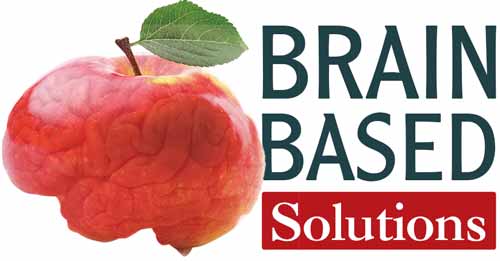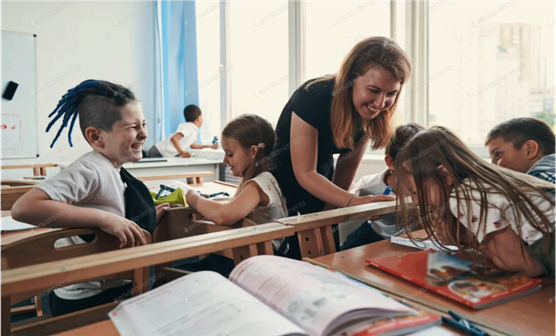The following is designed for Middle School children – it can be adjusted up or down as needed for older and/or younger children.
School will never be the same again – this is the reverberating acceptance dilemma of parents and teachers as they try to figure out what to do about the uncertainty, the noise, and the passage of time.
Children, too, are scrambling for respite from the uncertainty and anxiety associated with a life trajectory that is new to everyone. Theirs is a confusing existence…a dubious journey in a school system bereft of longstanding anchors that used to allow the ready advance to teenage thresholds and young adulthood plateaus.
These are the “CKs” – the Covid Kids. The generation who have already had their growing-up disrupted. As a result, parents and teachers are in the same ‘leaky’ boat … and often rowing in opposite directions.

Figure 1. Children are struggling in uncertain times
Post-Pandemic Parents
What catalyzes their decision-making towards any specific course of action, any particular belief system, or any crisis of existence is often ill-informed from a science perspective, mostly intuitive from the gut bolstered by hearsay, but always for the ‘good’ of the child. I have had a long conversation with parents, teachers and students who are each having very different experiences with the post-pandemic school. Very often one hears words that capture implicit insecurity and the need for clarity of direction.
- Nightmarish!
- Loving it, I think!
- Have no clue!
- Very worried!
- Lost!
- Another parent says all this zooming and mask stuff is really damaging my child!
As you read these words, it is natural to decipher what a parent is trying to associate with learning and school. These desperate exclamations are emanating from places of fear, of anxious hope, and of insidious uncertain outcomes. Unfortunately, most of these loud contributing voices have expressed similar uncertainty, and the same anxious hope, prior to Covid.
But now it all seems more imminent. Whatever it is? Heady times indeed! We seem to have arrived at a singular moment for learning systems.
Is my kid going to be all right? Are they doing the right reading program? I heard through the grapevine that the new math syllabus is no good? Why is my child not sleeping? Why is she so nervous? Why is he so hyper-vigilant? I’m worried about them constantly! He doesn’t even seem to be my child anymore! What has happened to my beautiful gentle girl?
Of course, as parents we are worried. We are hardwired to be caring and by extension worried. That’s what it means to be a parent. It’s hard to know, even in times of ‘normality’ if the schools are doing the right thing for my child… for any child!
Some days my child is doing just great, and I experience anxious happiness – hoping it will last.
Then, for no apparent reason, my child is struggling … just falling apart. Was it bullying? Was it Facebook or Instagram? Was it because his long-time friend has a new best buddy? How would anyone know? It’s such a delicate time, middle and high school.
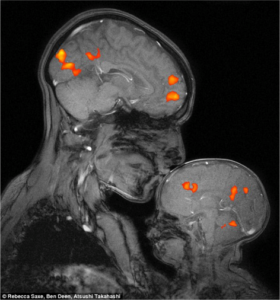
Figure 2. Parents are hardwired to care for our Children
School is so remote for parents. And when a parent ends up in the principal’s office for a one-on-one with the counselor, the psychologist, or the IEP coach, they use words that have no immediate meaning for moms and dads – engagement, pedagogy, dysregulation, deliberate non-attention, academic output, attention deficit, willfully disruptive, a nuisance to classmates, and more – that make the project seem so remote that I am not able to argue my corner except to say words like… ‘But… she is so good at home, so interested in current affairs, and she loves rollerblading and horses’.
So, in fact, the problem is not the pandemic or even the post-pandemic re-entry. The problem is school, is multifaceted, and has existed for a long time – for at least three generations. The problem is that there is too much confusion about what school is, what it’s supposed to do, and how it’s affecting my child … and the myriad failed solutions since Sputnik have exposed an exceedingly broken system. But it’s the only system we have…. And its not just parents! If you asked twenty teachers the three questions mentioned above, you’d more than likely get twenty different answers.
What if I were to tell you that, as a parent and as a learning scientist in cognitive neuroscience, your child will be just fine, and school will do just fine too?
The Eye-Opener
I raised three of my four children without knowing very much about either learning sciences or indeed cognitive neuroscience. It was a dismal ‘hit or miss’ reactive, ‘rewards and punishment’ extension of the world that I learned at the hands of my teachers, my parents, and from my professors at university in my courses for teacher preparation. By comparison, raising the last child with a cognitive injection of neuro-knowledge was a breeze.

Figure 3. Teaching without knowing about Brain makes no sense
I taught elementary, middle, and high school for more than 10 years. There were moments – even days – when I did really well. I could see light bulbs going off for my students and life was good. These days reinforced my enthusiasm for my profession. But there were a lot of days when I was completely out of my depth. I didn’t know enough to manage some unruly, disruptive, oppositional, even aggressive child that yanked my chain and made me hate my job.
I was not alone. I witnessed many of my colleagues throw in the towel … abandon the chaos of the ‘teenage pandemonium’ – a time of enormous mood swings, perfidious and deliberate inattention, and abhorrent hatred for subject matters that were so precious to educators.
So what changed for me? Why was raising my last boy so different from raising the older (when I was younger and had more energy) two boys and their sister? The answer seems simple and obvious in retrospect – but at the time you couldn’t have told me.
I had spent more than twelve years in education, studying and applying my skills using everything that I knew intuitively, and everything that I had been taught by knowledgeable professors. And yet I knew almost nothing… NADA …. about the one thing that I was engaging every minute of every day – the child’s brain. In fact, the things that I knew about my own brain were not only woefully sparse, those few items that I ‘knew’ turned out to be entirely WRONG!
How could this be? How could I have raised three children and taught thousands of other people’s children and yet have no idea about what is going on in the learning brain?
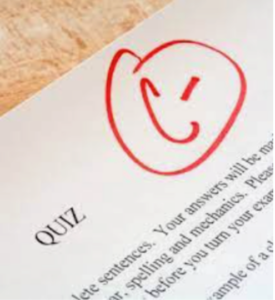
Figure 4. How could I have known so little about Brain?
Are we teachers the only profession that does not study the organ that we use everyday in our work? Imagine a similar scenario for heart surgeons or for car mechanics.
“I love medicine but I have never studied the heart, but I will gladly perform your transplant!”
“I love Tesla’s and I like the color blue, but I have never looked under the hood! Yes, I am willing to work on your car.”
It’s time to look under the hood! Imagine your doctor or your friendly mechanic saying something like these words about your impending surgery or your brand new Tesla. Yet, we give our brand new shiny children to well-meaning teachers every day… knowing that they have NEVER looked ‘under the hood’ of a child brain.
Ask any teacher… “Tell me about Long Term Potentiation?”
LTP is recognized by neuroscientists as ‘the most exciting discovery for learning’ ever. That was back in 1947, when it was discovered. I was lucky… stumbled upon in at the close of 2019. And yes, Neuroscientists are indeed correct. Long Term Potentiation is the most exciting discovery for learning EVER…. ALL parents and teachers need to know what it is and how to implement it. We have a long ways to go.
Under the Hood
When we look under the hood, we are shocked to realize why the world is the way it is. It begins with ourselves. A quick look at a person’s autonomic nervous system (ANS) reactivity illuminates many powerful reasons for how we show up in the world. All teachers and parents need to first know their own susceptibility to social context – strange how we spend most of our lives trying to figure out who we are and what we are here to do. Thank Mark Twain for wittily reminding us about the two most important days of our lives:
– the day you were born
– the day you found out why
But in order to get to that place of definitive certainty, I as a parent, or teacher, would do well to replace my ‘intuitive’ lens with an embellished cognitive neural lens. It becomes quickly clear that words matter – words like hemisphere, lobe, amygdala, hippocampus, parietal, occipital, temporal, prefrontal cortex, and lots more.
It seems like a foreign language, a foreign country. And in many respects, it has been in the past. But since the decade of the brain (1990 – 1999), we have made many advances in understanding, through imaging technologies, and in connecting the dots of centuries of medical observations and explanations from lesions and autopsies.
All behavior is simply communication; all communication derives from neural substrates that explain what is going on.
We are particularly fortunate to have a rich array of potential in our classrooms and households – resilient ‘dandelion’ children and super hypersensitive ‘orchid’ children. In the pandemic out-of-school environment, we were asked to step up to meet new and different challenges. Some had to do with technology, cameras on or off, access to fast internet and having our faces splashed in front of everyone close up. This challenged children as well as teachers and parents.
Gone were the old days of ‘in loco parentis’ where I gave away my child to the school. For the first time, the school came to my home. Teachers were in broad view in front of parents and children in the living room, the kitchen, and in play spaces. This was very unsettling for some children, for some parents and indeed for some teachers. The sacred anchors of time and space were shattered, replaced with nebulous psychological replacements that didn’t work for everyone, and sometimes failed to ignite curiosity, interest, or even safety.
One interesting thing that came out of that early pandemic experience distinguished sensitive children from resilient children in relation to engagement, motivation, and psychological safety. These same emergent discoveries became part of what was later called the Great Resignation. Children figured it out first; sensitive workers figured it out soon after. Now everyone knows what it means and how to gain its powers of survival.
As species survivors, we Homo sapiens are goal-directed volitional beings who thrive with intrinsic motivation.
The human experience is enshrined with the notion that we are essentially goal-directed and volitional. That means that we thrive with a sense of autonomy; that we aspire to mastery; and that we live through a sense of purpose.
In a word, humans are intrinsic beings. Innate implicit motivation is derived from that inner dominant feeling of altruism, desire and ability to make a contribution, and experience a sense of belonging through participatory social interaction. This is how children describe their newfound freedoms and personal fulfillment in a broken school system that invaded their homes but gave them a novel and surprising sense of engagement with life. They were not simply doing life; they were living life. School wasn’t something that was happening to them, they were choosing to be part of (or not) of a new learning environment that included their voice and contribution.
I watched in amazement as these young learners very deliberately, if unwittingly, stepped away from Skinner’s two-dimensional behaviorist world and chose instead their own co-created four-dimensional cognitive academy. This emergent tech-enabled environment was firmly in line with an evolved understanding of the new century. The new generation seemed to be leading from the rear.
Later, when it was time for workers to resume their attachment to their rewards and punishment two-dimensional workplace, they too chose to stay in a cognitive world where they had gained a modicum of self-respect and freedom that was hitherto outside their everyday experience.

Figure 5. Intrinsic motivation is based on autonomy, mastery, and purpose
Intrinsic Cognitive World: Definitions to Know
Autonomy: Simple can imply autonomy; standing or sitting; getting up when they wished; turning on camera or not, using other devices when they wished, listening or engaging more. Taking a break when they needed it. They were essentially co-creating a new learning space. This is exactly how brain likes to engage. It was impossible for them to even imagine being told what to do anymore.
Mastery: Children have realized that they can get more work done when they want to – not when they are told to. Agentic learners are all-in when they feel there is a reason and purpose for their lives. It’s a Me Here Now way of looking at a very fast-paced world.
Purpose: They were coming to grips in a very visceral way with what school is about and what they are going to do with their lives.
Autonomy Mastery and Purpose are core elements of Intrinsic Motivation. So, moving them into an extrinsic space where motivation is based on Rewards and Punishments only causes them to experience reactive amygdala hijack. When that occurs learners will be back in the old world of Freeze Flight and Fight.
Teachers and Parents are in this world too.
Adults are in this evolving cognitive fast-paced information age. For those of us who are in the business of engaging young people so that they, in turn, can take their place in the world and contribute to society, we can adjust easily to encounter and enhance the experience for our children.
Co-create: Great opportunity to think about co-creating your learning space with children so that they have more autonomy, more opportunities for mastery and cement their connection to purpose.
Me Here Now: Children have a lot to say about their lives today – whether online or coming back to classroom – this is a perfect moment to invite them into the safety of a safe space; to feel a sense of belonging, connection, social sharing, and contribution.
Strategies to Engage Children in a Post-Pandemic World
Brain Breaks
Activities that foster a sense of belonging, fill the space with oxytocin, serotonin, and norepinephrine are associated with good engagement. Brain breaks are part of the solution. Begin with a discussion for deep understanding – why I should attend to a brain break. Ideally, a brain break should be (i) standing (cerebellum), (ii) involve hands and legs where possible (parietal small and gross motor skills), (iii) have a cognitive aspect (predicting, planning, articulating, PFC) to include all the lobes, (iv) cross the midline (engage corpus callosum), (v) include singing or shouting out loud (temporal Broca’s, Wernicke’s area with increasing focus on attentional regions).
Teacher Mindset
No more sage on the stage. The old days of the teacher being the purveyor of content are gone – this is a whole learning environment where great teachers are facilitators; a provider of psychological safety, and dispensers of appropriate neurotransmitters that allow the children to feel part of, safe, and able to contribute in the here and now.
Effective Affective Strategies
That might sound ambiguous. How can something be effective and effective at the same time? Effective means that there will be a good outcome. Affective means that the outcome will happen because it is anchored in a meaningful emotional milieu. A before E is the rule. Affect before Effect! If you want good results, anchor your thinking with positive emotions. Another way to say it is this: a child will not learn from a person they do not like, or fear, or who treats them poorly. The child must ‘see’ themselves in the learning space and want to engage.

Figure 6. Brain reacts poorly to rewards or punishments
Age plus One
If the children are 12 years old, plan to have them, every 13 or so minutes, standing – doing some fun physical activity that is exciting, engaging — basically filling the room with oxytocin, serotonin, dopamine, and norepinephrine.
Co-Create
Brain breaks are good – but better by far when students create their own – take ownership for creating and delivery. Think about small groups of four – make an activity to entertain and excite the students in the next Age Plus One activity.
ME HERE NOW
Introduce a fun class where children find themselves on a map that they draw. Begin with a Google printout of a nearby village or town. Each child finds their house on the map, trace on paper their journey to school. Add the points of the compass. Are they N, S, E, or W of the school – how many miles from the school? What mode of transport do they use to get there? Use colors and have fun – use art to create posters and collages of the finished product. Point out where they used math, science, reading wiring, and any technology to do this work. Ground their return to school in a journey that is part of who they are and where they are going. Let it flow from there – follow Appetite over Aptitude. Some children will decide to go on a journey that we can’t anticipate. Follow their passion.
Long-Term Potentiation
End each class with ONE WORD, or Graphic that summarizes each child’s emotion about the class/the new information or the experience. Post these in a public space in the classroom. The next day (after a good night’s sleep, where the brain consolidates what the child rehearsed cognitively) begin with that LTP display. Choose one object (Word or Graphic) and inquire which student created it. Ask him/her to explain why they chose that word or graphic to describe their experience.
Note: The very important teacher stands back and allows the child to speak without any editorial interruptions or corrections. Just listen! When the child is finished telling their story – allow as much time as is meaningful – that child chooses the next object (Word or Graphic) and the owner of that construct adds their reasons for the choice. Do this until everyone has spoken.
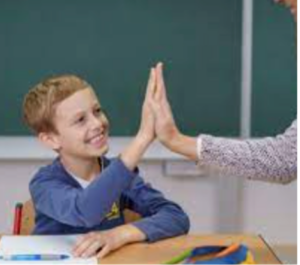
Figure 7. Long-Term Potentiation increases a child’s capacity to learn
Activities like this can take up a lot of time at the beginning of a class – in fact it could take the entire class. It is a very powerful investment in the child’s learning capacity.
Know that you are building strong white matter structures that will contribute to the architecture of the child’s brain for the rest of their lives. This is what’s needed right now for children to ground themselves in new psychological anchors that can replace the pandemic chaos – time well-spent in rebuilding and strengthening structures that have been damaged.
